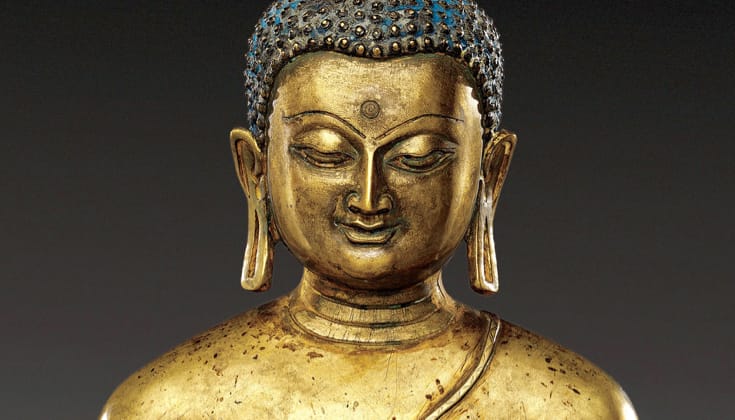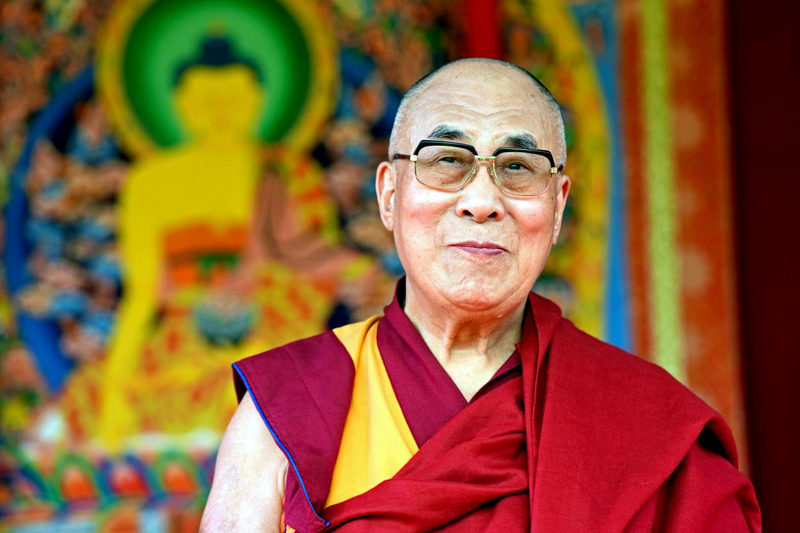By Prof. Madhu Rajput* & Squadron Leader Toolika Rani (retd)*
(TibetanReview.net, Jun11’20)
Where did we come from? Where do we go? Who or what created life- God, energy, evolution? Does it have a form? How do we know it? Since they overcame the basic challenges to survival, human beings have grappled with these questions and are still doing. In their quest they developed various theories, philosophies, beliefs, depending on their social context, geographical factors and thus originated various religions of this world. Initially Nature formed the basis of faith, later as science started unraveling the nature’s secret, man’s inquisition regarding self became the foundation plank of these. The most riveting feature of all this development however was the underlying uniformity of the tenets. They may differ on how and why a living being acquires life or what happens after death but between these two phenomena how a life shall be lived was the same in every faith. One full of love, good deeds, selflessness and concern about others was considered a virtuous life across the spectrum. Thus it would appear that all religions preached a harmonious co-existence, with Nature as well as with other human beings. Why then, something which was intended to bind, is a reason of strife all over the world? Why is there bloodshed in the name of the path that showed only the way of love? Given the diverse conditions of human existence on this earth, is it possible to end or reduce this desire to dominate, annihilate the other? Though the answer is available in every religion, we hereby focus on the Buddhist view of explaining it, as propounded by the ultimate epitome of it- His Holiness. The view discussed below is a reflection of our understanding of his teachings on the subject, with which we fully concur.
When two or more different viewpoints come in contact, there may occur two reactions- either they develop insecurity and hence try to belittle the other and dominate or they may observe, acknowledge the goodness in the other and attempt to synthesize. The endeavor shall be to develop an understanding to promote the latter. Though in Nature, synthesis is a natural phenomenon, whenever two different colours are mixed, a new one emerges containing the qualities of both but looking entirely different, and that’s the beauty of it, for human beings synthesis sometimes is blocked by a fragile ego, insecurity, rigidity or ignorance in the name of maintaining the purity of blood, race, caste, religion, tradition etc. all divisive lines. As Buddhism lays a lot of emphasis on the ‘law of cause and effect’, it traces the reason of strife, be in internal or external, to our own thoughts and actions and accordingly prescribes a solution that entails controlling our mind through knowledge and faith. Therefore, for the religious rigidity to go, the task shall begin with understanding one’s own religion. His Holiness says that it is not enough to merely quote from The Book and feel superior, as “Everyone has a book to quote from!” Rather one should endeavor to “investigate” one’s religion, ask questions upon the relevance of a particular practice and if it qualifies the test of reason, adopt it otherwise it is wise to discard it. The attachment towards one’s faith shall not result in a closed mind, as “a biased mind cannot grasp reality”.
After gaining conviction about the significance of one’s own religion, it is time to expand further and observe around. Every religion has its specialty. For example- Hinduism believes in soul, something that is unchanging and permanent, while Buddhism holds impermanence of everything as its core principle, and hence negates the concept of a soul- “anatman” (no soul). Hinduism and Islam talk of an afterlife in heaven or jannat, while Buddhism preaches the ‘nirvana’ to be the ultimate goal of a human life- the freedom from the cycle of birth and death. Herein comes in picture the importance of acceptance, of co-existence of “belief and respect”. We may have firm belief in our own religious philosophy but it is possible to have respect for a divergent view at the same time. That’s the basis of co-existence in India, which His Holiness mentions, “India, where I now live, has been home to the ideas of secularism, inclusiveness and diversity for some 3,000 years. One philosophical tradition asserts that only what we know through our five senses exists. Other Indian philosophical schools criticize this nihilistic view but still regard the people who hold it as rishis, or sages. I promote this type of secularism: to be a kind person who does not harm others regardless of profound religious differences.” Out of this respect emerges openness, the ability to adopt the relevant tenets from everywhere and enrich ourselves.
Every human being is a unique entity and is born with his/her own intellect and disposition. Even the children of same parents or the twins have different emotions and thoughts. Therefore, one model cannot fit all. Hence the existence of so many faiths and religions. Even the option to believe or not believe in religion shall be left to the individual. It should not be enforced by tradition, peer pressure or society. Everyone has a right to develop his/her own relationship with this universe, through personal investigation and conclusions. However if one believes in a religion one is born in, His Holiness advices him to keep the same religion lifelong. “There are many different religions and cultures in the world and each has developed to suit its own people. Because of that, I always recommend that it’s best to keep the religion you were born into. For anyone, to change religions is not easy and it just creates confusion.” Therefore conversion is advised to be avoided. The way we forever identify ourselves with the place of our birth and childhood, it is near impossible to remove the roots of our religious belongingness. Understanding of this for self and for others can diffuse a lot of tension.
On the co-existence of majority and minority, His Holiness says, “The majority must consider the minority as their invited guests. The minority, on the other hand, should be able to sensitise with the majority. Both shall pay attention to and appreciate each other’s views” and hold open discussions on the sensitive matters. “If problems are resolved in such a friendly manner; then both sides will gain. Suspicion of each other will only harm both communities. Therefore, it is very important to live in harmony and analyse where the opinion of the other lies. The best way to do this is to engage in dialogue, dialogue and dialogue.”
Since human societies are not monolith communities and there is more co-mingling in present times, it would be useful to think in contextual terms. For an individual ‘belief in one religion’ is advisable but for the societies ‘belief in many religions’ is the key to a peaceful, harmonious co-existence. “In the context of one person, a single truth is closely associated with a single source of refuge. However, in the context of society or more than one person it is necessary to have different sources of refuge, religions and truths.”
“Different philosophies and concepts are simply methods to bring people the wish and conviction to practice love, compassion, forgiveness, tolerance, self-discipline and so on. All religions offer help to humanity. Especially when facing difficult situations, all religions offer hope.” When this knowledge dawns, the road to enlightenment is open to all. Truly follow the teachings of your own religion and you will be amazed to see that they will all lead you to the same destination- to a kinder, calmer you. Then there will be no difficulty in embracing the other. It doesn’t necessarily have to be ‘we’ and ‘they’; it is possible to be ‘we in different hues.’ Like Nature, let there be place for all the myriad trees, birds and flowers. Let all flourish together in a symbolic relationship!
—
*Prof. Madhu Rajput is a faculty of History Department, Lucknow University, U.P., India. She works on women studies. Her latest book in on Tibetan women in exile (2019), published by Library of Tibetan Works and Archives, Dharamshala.
Squadron Leader Toolika Rani is a retired Indian Air Force officer and Research Scholar in Ambedkar University, Lucknow, U.P., India.







